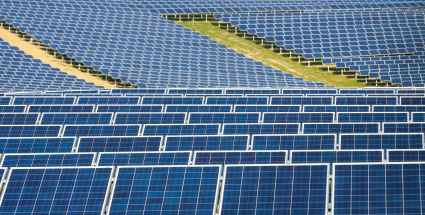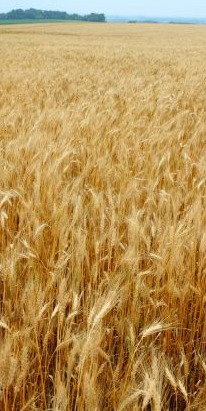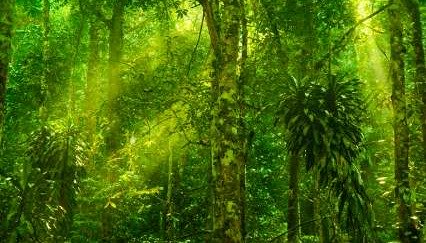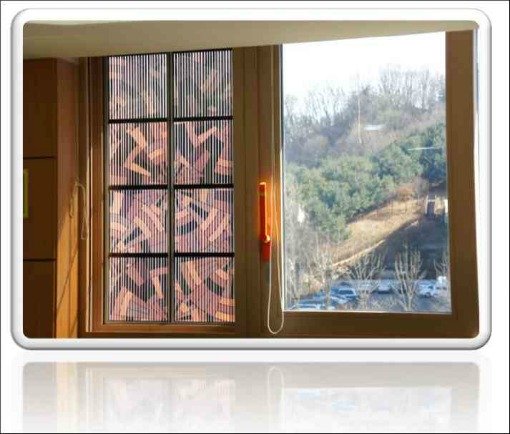- Home
- Gaia Energy
- Renewable Energy World
Renewable Energy World
Working With Nature
A renewable energy world would allow continued life on planet earth without draining resources. From a gaian viewpoint this would involve considering all the feedback loops naturally existing and co-operating with them.
Interestingly in our pursuit of renewable energy we tend to focus on large deployments of certain renewable harvesting mechanisms. Large solar photovoltaic fields. Large wind turbines and ever larger wind turbine farms. Huge hydroelectric dams and generating rooms. Or massive geothermal harvesting fields.

Our Preconceptions
This follows a pattern of thinking we have been pursuing for a few millennia - it has become ingrained in our psyche.
An Agricultural Analogy
Once we began harvesting crops we selected ever more ideal subspecies of each fruit or vegetable. We tended to have certain areas set aside for particular functions, like a garden, or a grazing field.
Following this sequence it seemed logical that by having larger and larger fields each focused on one form of crop we could be more efficient. It seemed so much easier to look after. Fewer and fewer people were needed to farm the land.
With industrialization more and more people were drawn to the cities. The need for energy supply became more focused on concentrated islands of land.
Large generating power stations, line transmission systems and coordinating mechanisms to mesh the larger local demand from far afield were required.
In agriculture having a single crop occupying large areas, while seeming to be more efficient, brought with it its own problems.

A sudden weather pattern change could wipe out an entire crop and some farmer's livelihood. Pests attracted to the crops would multiply rapidly and quickly adversely affect swathes of valuable food. Irrigation was required.
Large areas of land were exposed when fallow. Huge rainstorms would strip layers and layers of rich topsoil from the crop and pasture lands, also leaching valuable naturally occuring nutrients.
The two huge dust bowls in the United States in the 19030s and just recently in 2012 are a legacy of this type of cropping.
The Midwest has lost metres of rich alluvial topsoil washed into rivers and into the sea over the few decades we have practised monoculture.
Both fertilisers and pesticides have been required in increasing amounts to provide nutrition to a depleted soil and to combat pests. Waterways have become contaminated with fertilizer run-off. Such a small proportion of what is applied actually makes it to the growing crops.
We create more problems in an attempt to cover our technical shortcomings.
In response to these problems people have proposed hydroponics and we are embracing genetic engineering, feeling we are ever so wise.
Large monocultural cropping areas necessitate transportation from the farm to the consumer - mainly in the cities. Disruption from several quarters can bring about massive supply shortfalls.
Nature's Design For Renewable Energy World
In contrast to this is the apparent self-sufficiency of local woods and forests.
We
want countries and cultures to stop cutting down rainforests. Often
they are doing so to follow our "progressive" agricultural practices or
in search of minerals to supply our lifestyle. Right now a number of
these actions are in response to our need for energy - particularly in
the biofuels area.
A
natural forest regulates itself, survives years of drought and
inundation, copes with pests without resorting to created pesticides.
It supports a dazzling array of life from the smallest plants, to huge
trees, bacteria, fungi, birds and animals without any artificial
fertilizer.

Is there a message Gaia is sending us not only for our food provision,
but also for energy? After all in a few hours the sun sends the surface
of the earth all the energy we need in for a full year of our energy
supplies.
People would love to have a cost-effective renewable
energy world system that supported all our current and future needs.
Considering ideas we have been learning about agricultural improvements,
might there be intimations of how an alternative renewable energy world
might work?
Ecological Design - Dr John Todd
A shining light like Dr John Todd with his New Alchemy Institute and Ocean Arks International
has sought alternative ways of working with food, waste water, and
renewable energy working from an ecological organic basis. Several
projects have begun as a result.
Based on observing nature and then producing systems which mimicked this several arms were produced.
Bioshelters,
a greenhouse-like concept, but with significant biodiversity, sought to
extend growing periods especially in areas of greater latitude. This
utilizes the benefits of passive solar renewable energy effects.
Biological treatment of waste water has spun off into a large private company - the "Living Machine" based in Virginia.
Then
there has been an emphasis on aquaculture - using water to raise fish
for food in local areas. At the same time food can be raised
hydroponically.
Permaculture - Mollison & Holmgren
Coming from a similar perspective, again from food supply, comes the idea of permaculture.
Coined and developed by Bill Mollison with his fellow Australian David Holmgren, but practised by ancient societies in several parts of the world centuries before, permaculture gives another way of looking at a renewable energy world process.
It mirrors work by the Japanese agricuturalist Masanobu Fukuoka (1913-2008) whose work gained world-wide attention in his "One Straw Revolution" book.
Bill Mollison's ideas began from his work observing forests in his native Australian island of Tasmania. Although a quarter of a century apart in ages, the West Australian Holmgren came to work with Mollison while studying under him in Tasmania.
By having multiple crops, with their associated animal kingdom species, growing in association with each other synergies emerge. Pests have less chance of spreading rapidly. Failure of one crop will still allow others to grow and provide.
Even small areas from backyards to urban roof and balcony gardens can utilize the permaculture idea.
Routes of supply are short as food can be grown where it is consumed. This is not organic gardening, although it may utilize similar ideas, but a way of using the natural synergies in nature that emerge from a gaian world as a living organism with feedback loops to enhance, protect and adjust to changes.
Within permaculture, different organisms and various plant species will be more prominent than others in different years. Feedback loops will establish some more than others each year.
For a renewable energy world that would truly work, a permaculture idea would give flexibility, stability and short supply lines. Major outages would be less likley. Working this way would be in sympathy and concert with the world's natural processes.
It will involve a major change in thinking. New developments will need to be sought for a truly renewable energy world.
But achieving this more flexible, multi-noded system would allow for more secure energy supply, less outages and a built-in response to day by day and year by year changes in our environment.
Seeking the permaculture ideals where every plant, or in a renewable energy world, every energy harvester, would have more than one purpose and serve other energy harvesting devices to enhance their collection ultimately simplifies design. Each energy source would be used many times over to prevent a simple pass through situation where a number of possible benefits are lost.
Examples of these possibilities are emerging.
Solar Thermal
Within solar energy harvesting, the most efficient method is solar
thermal. There is no conversion required. Heat in is used as heat out.
Currently many newer very efficient manufacturers of these systems are focusing on supply to commercial customers.
This
due to what can already be seen with residential flat solar panel
design. Our home hot water and heating requirements occur in the early
morning and evening when solar supply is at its least. Frequently we
end up heating our hot water by grid supply, more than through our
alternative means.
One answer to this may be having highly insulated dual tanks or a thermocline system.
Commercial users tend to need their supply during the daytime, making supply to them a no-brainer.
Solar Power Generation
Staying with solar but from a photovoltaic idea, new technologues that allow windows, walls and roofing materials to harvest light efficiently even in low light situations and at non-critical angles to incident light are emerging.

Photovoltaic window courtesy of Dyesol
Like
permaculture, where each unit serves multiple purposes this use of
alternative energy seems light years beyond current approaches.
Being
able to be sited where populations are, even in higher latitude areas,
contrasts with the requirement for long transmission systems as required
by the widely supported Desertec system for a truly renewable energy
world.
Wind Power
Emerging technologies to multiply the effect of incident wind show
promise. Requiring smaller units to generate equivalent energy to large
turbines, they also produce less noise.
With faster effective
airflow, low frequency infra-sound will not be a problem. Although the
effects of this has been denied by those building wind farms and
turbines, there is increasing evidence of health effects and syndromes associated with larger constructions.
Such
improvements also allow renewable energy world harvesting from this
source in areas that previously would have been considered to produce
too low, reliable wind velocities.
Geothermal
Being able to employ geothermal heat energy from large building foundations, especially from piles driven deeply into the ground, would make cities and their buildings multifunctional.
Biofuels
Urban agriculture could enable the production of biofuels if these prove to be necessary in our future.
Some algal forms that do not even require sunlight
could lead to production at many locations. To be true to a
permaculture idea, ways to make such growth multifunctional and
biodiverse would need exploration.
Sea-Based Power
There is still scope to develop less intrusive ways to harvest marine energies from waves, tides and ocean currents. With many of the world's large cities located close to oceans, this is a further important source to consider in a renewable energy world plan.
Hydroelectric
Hydroelectric projects have been utilizing ever smaller resources now - down to mini- and micro-systems.
Storage Systems
New storage and control systems are being developed which should facilitate the many renewable energy sources to be available for effective power supply on a 24/7 basis.
Backup For Renewables
Beyond this, in a renewable energy world, would be an effective backup system that could kick in at times of compromised supply. The more localised this source could be the more useful it would prove in such a complex inter-related community-based renewable energy network.
Of great promise is the nuclear fusion work being developed by the team in New Jersey's Lawrenceville Plasma Physics. Its basic unit calls for a 5MW generator fired up by a capacitor bank wich could be charged from renewable sources. Quick to fire up, once generating, it could keep producing power until renewable resources were once more available.
A truly renewable energy world would have these beneficial local networked links that would allow for long term enhancements and benefits for all including our precious space capsule, planet Earth.
- Home
- Gaia Energy
- Renewable Energy World
New! Comments
Have your say about what you just read! Leave me a comment in the box below.